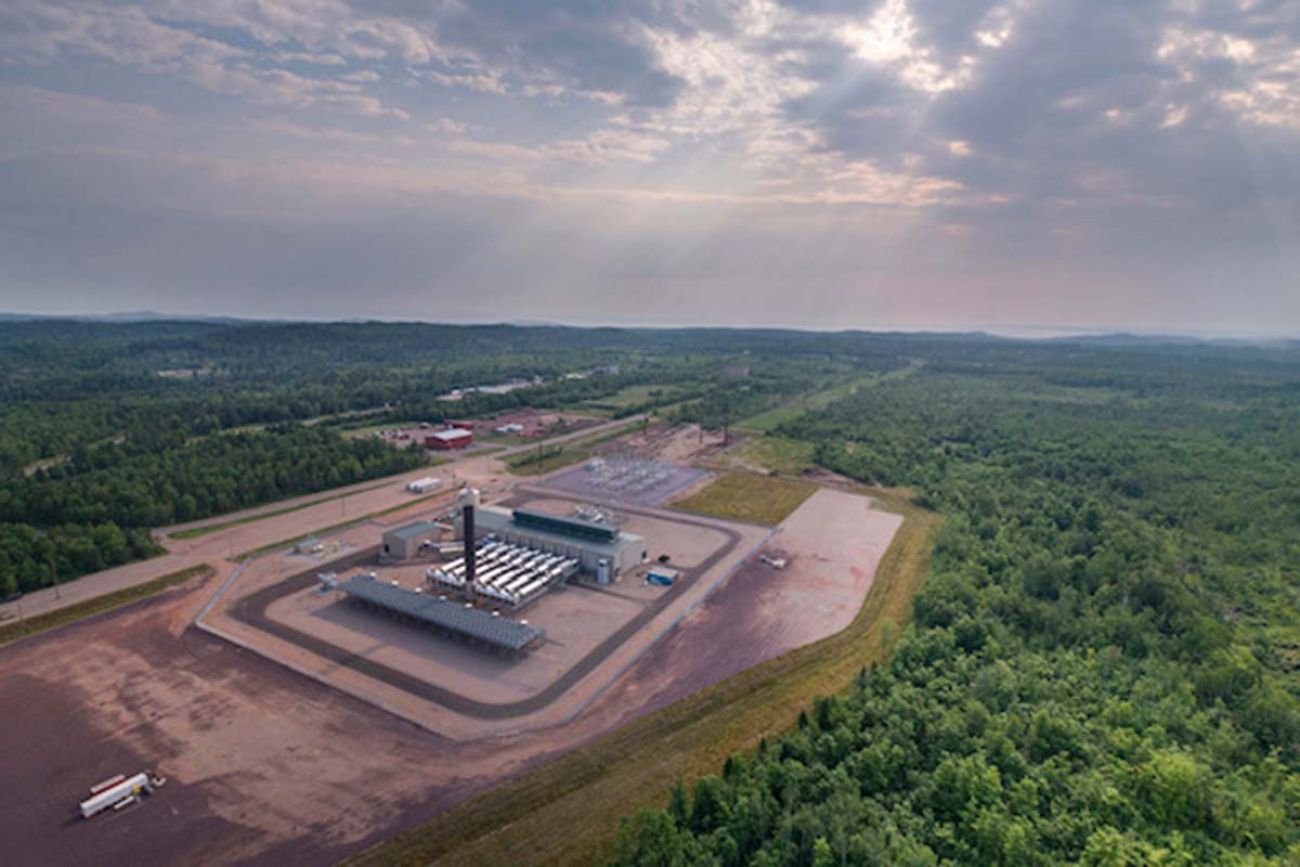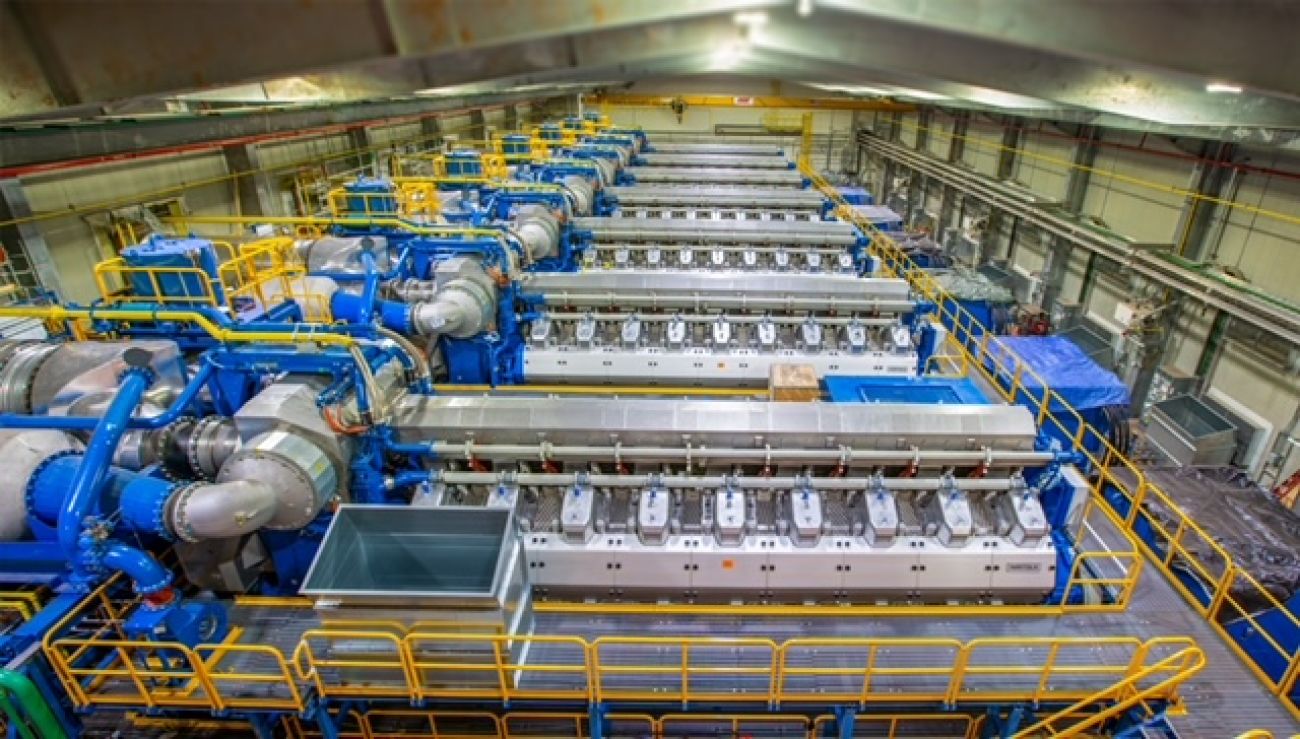Michigan clean energy transition gets tricky in the U.P.

- New Michigan law requires clean energy sources by 2040
- Two new natural gas plants mean the Upper Peninsula may not qualify
- Michigan regulators are considering additional flexibility
This coverage is made possible through a partnership between IPR and Grist, a nonprofit environmental media organization.
Michigan’s new climate laws require utilities to transition to entirely “clean” electricity sources by 2040. As the state’s Public Service Commission figures out what that will look like, it has to pay special attention to the Upper Peninsula and the natural gas plants that went online there just five years ago.
The U.P. is a huge area with many rural communities, and power can be unreliable. Over the years, some utility rates have been among the highest in the state and even the country.
But Chair Dan Scripps said when it comes to the energy transition, the region may have a leg up.
“Largely because of the hydroelectric assets — the dams across the Upper Peninsula — the Upper Peninsula actually gets a significant higher amount of its electricity from renewable resources than the rest of the state,” he said.
Energy crossroads
Transitions in the U.P. are nothing new.
In 2013, the iron ore mining company now called Cleveland-Cliffs switched from the coal-burning Presque Isle Power Plant to a different provider. (That was made possible by a 2008 law that allowed mining companies to choose where they got their energy.)
Related:
- As Consumers mulls selling 13 dams, some in Michigan fear another disaster
- Nuclear waste from Manhattan Project headed to southeast Michigan landfill
- Which Michigan counties have most EVs? Which have none? Politics play a role
The Cliffs mining company was the Presque Isle plant’s biggest customer, using around 85% of the load. With federal pollution standards looming as well, the Wisconsin utility that ran the coal plant, We Energies, announced plans to shut it down.
The Midcontinent Independent System Operator, which manages the region's transmission, rejected those plans. MISO reasoned that it would destabilize the grid. And the cost of keeping the coal plant open was pushed onto customers in the U.P., hiking rates higher.
After years of wrangling between the state, feds, mining companies and utilities, the Public Service Commission agreed to replace coal with natural gas.
“This new gas-fired generation is a critical piece in shaping the future of energy supplies in the U.P. — a future that is cleaner, more reliable and affordable for U.P. residents and businesses,” said then-chair of the commission Sally Talberg in a 2017 news release.
The commission approved a plan to spend $277 million on two natural gas stations. It was proposed by Upper Michigan Energy Resources Corp., a U.P.-based subsidiary of the Wisconsin utility WEC Energy Group.
The plants are in Baraga and Marquette counties and hold a total of 10 reciprocating internal combustion engines, known as RICE units. They went online in 2019 and were built to last for decades, according to UMERC, which serves around 42,000 customers.
Scripps said the natural gas units “were put in place to solve a very specific concern, and in partnership with the largest customer — again, the mines in the Upper Peninsula.”
As part of that agreement, Cleveland-Cliffs pays back half of the $277 million over 20 years, and residents and businesses pay the rest.
Natural gas conundrum
If the utility keeps using those natural gas units as is, it might not be able to meet what’s required under Michigan's clean energy law.
The legislation specifically mentions these natural gas plants as a hurdle and directs the public service commission to figure out what to do.
According to Scripps, this might require a more flexible approach, like reducing or offsetting their emissions instead of shutting them down.
“How do you effectively get to net-zero carbon emissions by 2040 but maybe with more flexibility around carbon capture and that sort of thing,” he said, saying that reasoning has been used in other parts of the state.
The law allows for natural gas that's paired with carbon capture and storage, when emissions are trapped and then stored deep underground, a technology that’s still being developed.
Burning natural gas generally emits less carbon dioxide than coal. But it’s still a fossil fuel made up mostly of methane, a potent greenhouse gas. And groups like the climate think tank RMI argue that many comparisons of coal and gas only consider end-use emissions, and don't account for methane leaks during production or transportation. According to an RMI analysis published last year, those leaks can put the climate impacts of natural gas on par with coal.

Reliability and cost
The Upper Peninsula’s instability — and the lack of affordable energy — can have serious consequences for people living there.
People in the U.P. say that “a squirrel sneezes and the power goes out,” according to Tori McGeshick, a member of the Lac Vieux Desert Band of Lake Superior Chippewa Indians.
McGeshick, who now lives in northern Wisconsin, works as a climate resilience coordinator for the tribe and the U.P. organizer for the advocacy group We the People MI. She wants energy decisions to include more input from tribal nations.
Unreliable power has had a profound effect on her community, McGeshick said, especially elders and people with specific medical needs in remote areas.
“A lot of my elders live like 15 to 20 miles on the outskirts of town, and they experience the outages the most. And a lot of the elders that I've spoken to have medical issues,” she said. “That's when it just becomes a survival issue.”
For her, this process is about energy justice for the entire region.
“If you're constantly raising the utility rates and expecting us to pay these rates, but then also not giving us the reliability that should come with it, then it's a problem,” she said.
Some Yoopers are strongly in favor of keeping natural gas. During the commission’s public hearing in Marquette at the end of July, some said they’ve already footed the bill for the natural gas plants and that it was important to energy security.
“Access to affordable and reliable energy is key to keeping the Marquette Iron Range competitive and viable for another 177 years,” said Michael Grondz of Ishpeming, who works at the Cleveland-Cliffs Tilden mine and is the vice president of the United Steelworkers Local 4950. “Cleveland-Cliffs has made great progress to reduce emissions by replacing the Presque Isle Power Plant with the modern gas RICE generators, while reducing the cost and making local electricity supply more reliable for families like mine all over the Upper Peninsula.”
Others believe a compromise can be worked out, and don't think the state's laws necessarily need to change.
“Renewables continue to be more and more efficient,” said Abby Wallace, a member of the Michigan Environmental Council and a student at Northern Michigan University who spoke at the public hearing in July. “There are ways that the RICE units could be made more efficient themselves. And I think it's premature to say that the U.P. in no way could meet the goals that the rest of the state are being held to in the legislation.”
And not everyone agrees that natural gas is key to energy security. Roman Sidortsov, an associate professor of energy policy at Michigan Technological University, said gas prices are variable and hard to predict.
"People tend to forget that fossil fuels, and oil and gas in particular, it's incredibly volatile business," he said. "There's very little stability in the prices."
Sidortsov, who was a member of the state’s U.P. Energy Task Force several years ago, said the U.P. deals with different environmental factors and customers than the rest of the state. And the grid was built to serve industries that aren’t as robust as they once were.
He thinks a lot of the region’s demand can be met with distributed generation — getting power through smaller, more localized sources of energy, something energy experts have discussed for years.
The model of large, centralized power plants has worked for the Lower Peninsula and other parts of the country, he said, "but it's perhaps not the most efficient way to produce and deliver power when you are talking about the geography of the Upper Peninsula when the distances are vast.”
The Public Service Commission has to recommend what to do with the natural gas units and determine how feasible renewable energy is in the U.P. It must submit a report to the governor and legislature by December 1.
People can reply to public comments on the commission’s energy transition study until September 13.
Michigan Environment Watch
Michigan Environment Watch examines how public policy, industry, and other factors interact with the state’s trove of natural resources.
- See full coverage
- Subscribe
- Share tips and questions with Bridge environment reporter Kelly House
Michigan Environment Watch is made possible by generous financial support from:
Our generous Environment Watch underwriters encourage Bridge Michigan readers to also support civic journalism by becoming Bridge members. Please consider joining today.
See what new members are saying about why they donated to Bridge Michigan:
- “In order for this information to be accurate and unbiased it must be underwritten by its readers, not by special interests.” - Larry S.
- “Not many other media sources report on the topics Bridge does.” - Susan B.
- “Your journalism is outstanding and rare these days.” - Mark S.
If you want to ensure the future of nonpartisan, nonprofit Michigan journalism, please become a member today. You, too, will be asked why you donated and maybe we'll feature your quote next time!






